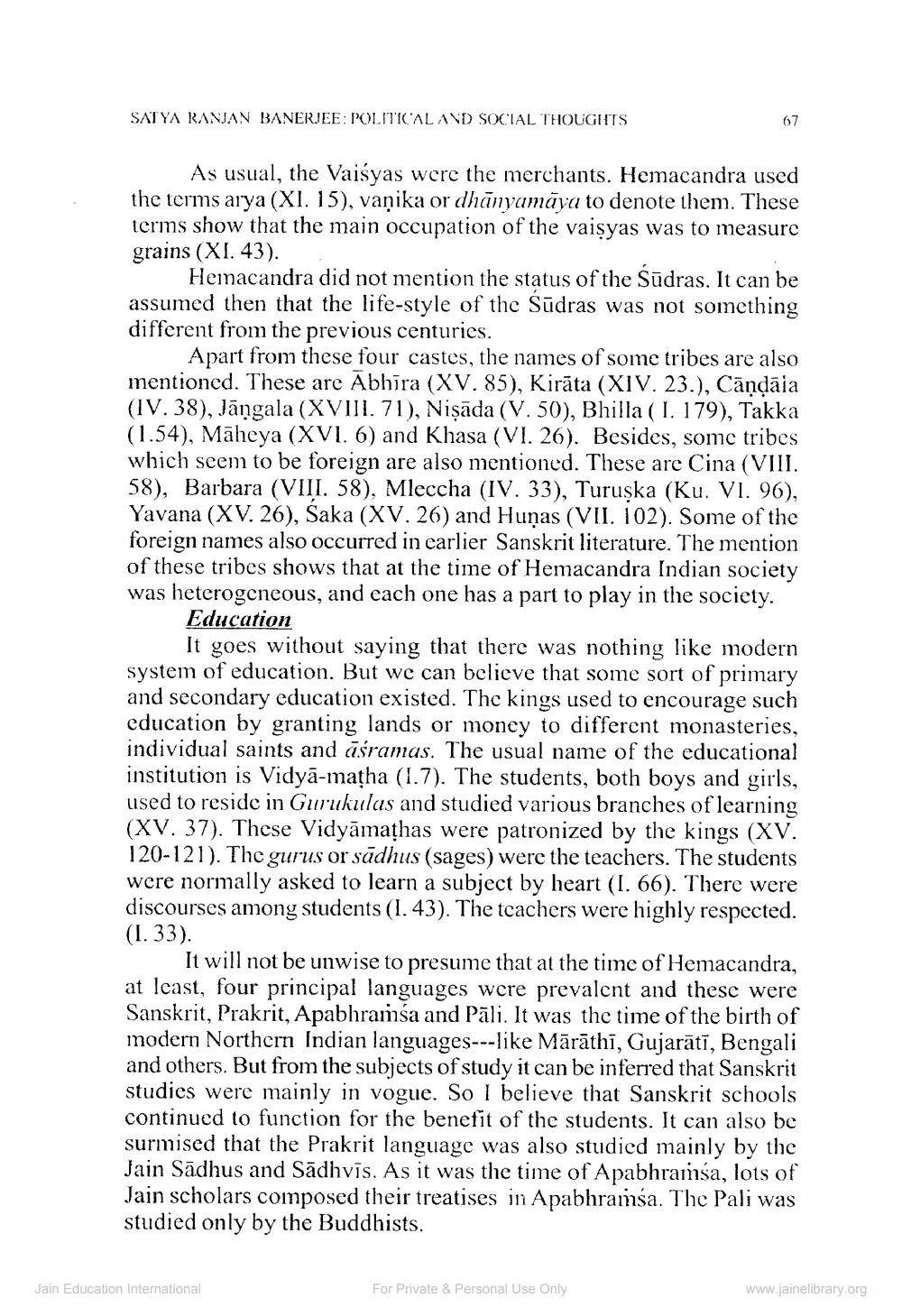________________
SATYA RANJAN BANERJEE: POLITICAL AND SOCIAL THOUGHTS
67
As usual, the Vaisyas were the merchants. Hemacandra used the terms arya (XI. 15), vanika or dhanyamāva to denote them. These terms show that the main occupation of the vaisyas was to measure grains (XI. 43).
Hemacandra did not mention the status of the Sūdras. It can be assumed then that the life-style of the Sūdras was not something different from the previous centuries.
Apart from these four castes, the names of some tribes are also mentioned. These are Abhira (XV. 85), Kirāta (XIV. 23.), Candāia (IV. 38), Jāngala (XVIII. 71), Nisada (V. 50), Bhilla (I. 179), Takka (1.54), Māheya (XVI. 6) and Khasa (VI. 26). Besides, some tribes which seem to be foreign are also mentioned. These are Cina (VIII. 58), Barbara (VIII. 58), Mleccha (IV. 33), Turuska (Ku. VI. 96), Yavana (XV. 26), Saka (XV. 26) and Huņas (VII. 102). Some of the foreign names also occurred in earlier Sanskrit literature. The mention of these tribes shows that at the time of Hemacandra Indian society was heterogeneous, and each one has a part to play in the society.
Education
It goes without saying that there was nothing like modern system of education. But we can believe that some sort of primary and secondary education existed. The kings used to encourage such education by granting lands or money to different monasteries, individual saints and asramas. The usual name of the educational institution is Vidyā-matha (1.7). The students, both boys and girls, used to reside in Gurukulas and studied various branches of learning (XV. 37). These Vidyāmathas were patronized by the kings (XV. 120-121). The gurus or sādhus (sages) were the teachers. The students were normally asked to learn a subject by heart (I. 66). There were discourses among students (I. 43). The teachers were highly respected. (I. 33).
It will not be unwise to presume that at the time of Hemacandra, at least, four principal languages were prevalent and these were Sanskrit, Prakrit, Apabhramsa and Pāli. It was the time of the birth of modern Northern Indian languages--- like Mārāthī, Gujarātī, Bengali and others. But from the subjects of study it can be inferred that Sanskrit studies were mainly in vogue. So I believe that Sanskrit schools continued to function for the benefit of the students. It can also be surmised that the Prakrit language was also studied mainly by the Jain Sādhus and Sādhvis. As it was the time of Apabhramsa, lots of Jain scholars composed their treatises in Apabhramsa. The Pali was studied only by the Buddhists.
Jain Education International
For Private & Personal Use Only
www.jainelibrary.org




